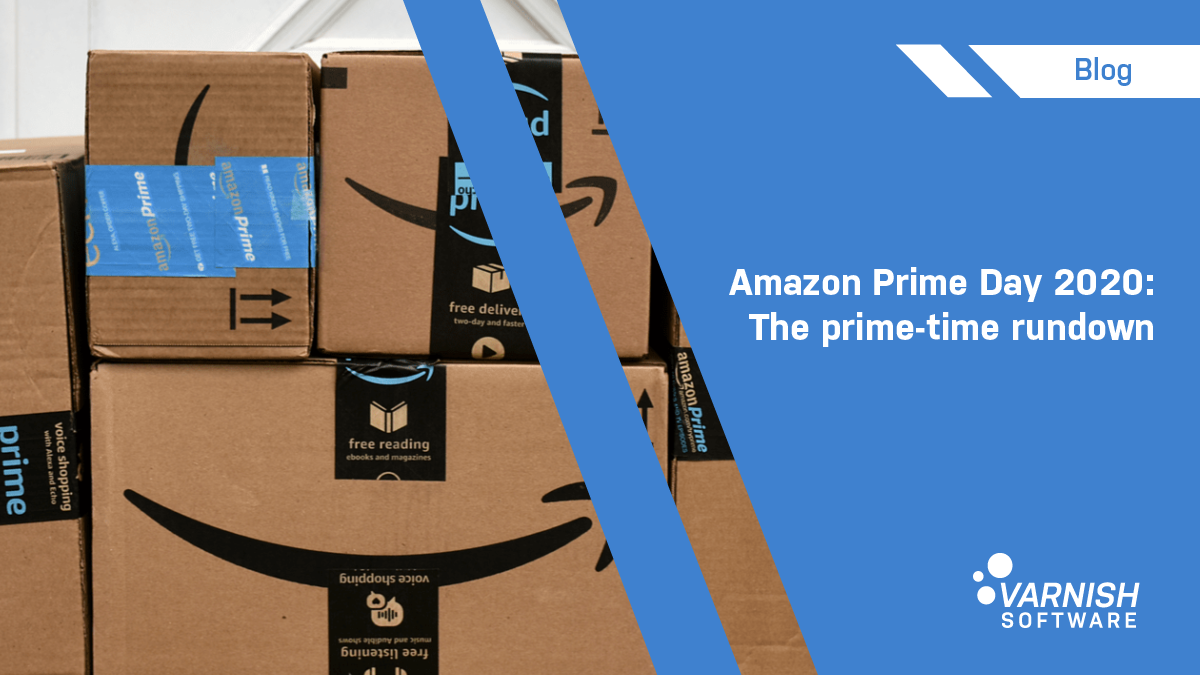Unlike previous years, Amazon Prime Day 2020 didn’t see any major technical glitches or outages. Apart from occasional page load timeouts and slow performance at peak times, the online shopping experience was reportedly smooth. More generally across the e-commerce sector, trends emerged to show and counter the influence of Amazon Prime Day: non-Amazon e-commerce sites offering promotions during Prime Day saw up to four-times-higher traffic than normal compared with sites that offered no promotions, and comparison shopping became the norm rather than the exception.
For Amazon and its marketplace sellers, shopping moved along at a brisk pace, beating the predicted 43% leap in sales over 2019’s Prime Day. This year sales topped 10.4 billion USD globally, surpassing the 9.7 billion USD forecast this year).
Most news stories focused on the deals available rather than performance issues, which appear to have been negligible -- highlighting the necessity and importance of being ready for anything when launching a major online shopping event.
Primed for the holidays
In fact, because Amazon Prime Day was delayed from its traditional July to mid-October, most consumers have regarded it as a holiday shopping kickoff and have begun the shopping they’d normally do around Black Friday now. The combination of a late Prime Day and an uncertain in-person shopping future thanks to Covid has created conditions ripe for early and socially distanced shopping.
Other ways to shop
The popularity of Amazon Prime Day notwithstanding, other retailers benefit from Amazon’s efforts to drum up off-season revenue as well. Consumers aiming to support their own values through shopping by supporting small businesses, boycotting Amazon for its labor practices, or seeking better competing deals elsewhere are increasingly finding alternatives. Many retailers are responsive to these demands, targeting authentic engagement with cause marketing, offering steep discounts without requiring that a shopper be a member or have a subscription (as is the case for Amazon Prime) to take advantage, or looking at long-term relationships with customers.
Amazon Prime Day has also helped to highlight different retail strategies and ways of shopping that contrast the Amazon Prime model. For example, direct-to-consumer brands that rely on consumer subscriptions or loyalty programs focus all-year-round on customer friendliness, i.e. ensuring stability and shopping when the consumer wants, not when the retailer thinks they should. This model aims to “transcend deal-busting culture”, avoiding deals and discounts and building long-term customer relationships instead.
Naturally, though, when a day like Prime Day comes along, it’s a good opportunity for all kinds of retailers to make a bit of noise about what they offer and what makes them different. In 2020, as shopping behaviors have changed completely, the retailer-consumer relationship has also changed, and successful retailers will tune in to the changing landscape.
Semper paratus: Always ready
Let’s not forget that it’s always a good time to be prepared for surprises these shopping extravaganzas might throw at you.
Always be ready.
- Focus on speed/page load performance: Retailers continue to get this one wrong. According to Akamai, 100ms delay in website load time can cost you 7% in conversion; a two-second page load delay increases bounce rate by 103%
- Have a backup plan: Be ready with a cloud caching solution to be able to scale up and down elastically
- Test: Stress test your setup
- Plan for availability: Make yourself redundant and as bulletproof as possible but plan for a potential outage; make sure consumers still see something other than an error message (caching can help here)
- Don’t forget mobile: As shopping on mobile continues to grow, 53% of mobile site visitors will leave if a page takes more than 3 seconds to load; bounce rates are higher on mobile phones than for any other device, according to Akamai statistics
In a competitive business like e-commerce, it’s more important than ever to understand and plan for the new normal: year-round shopping and special events both can create unexpected traffic peaks.
Be technically ready -- all the time.
/VS-logo-2020-197x60.png?width=136&height=60&name=VS-logo-2020-197x60.png)

